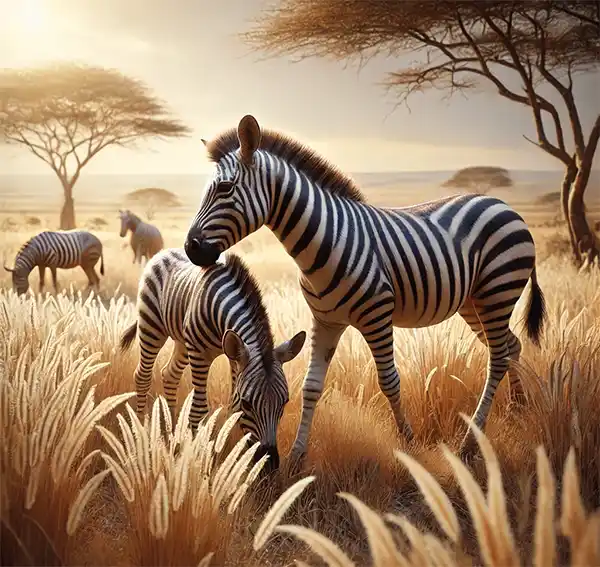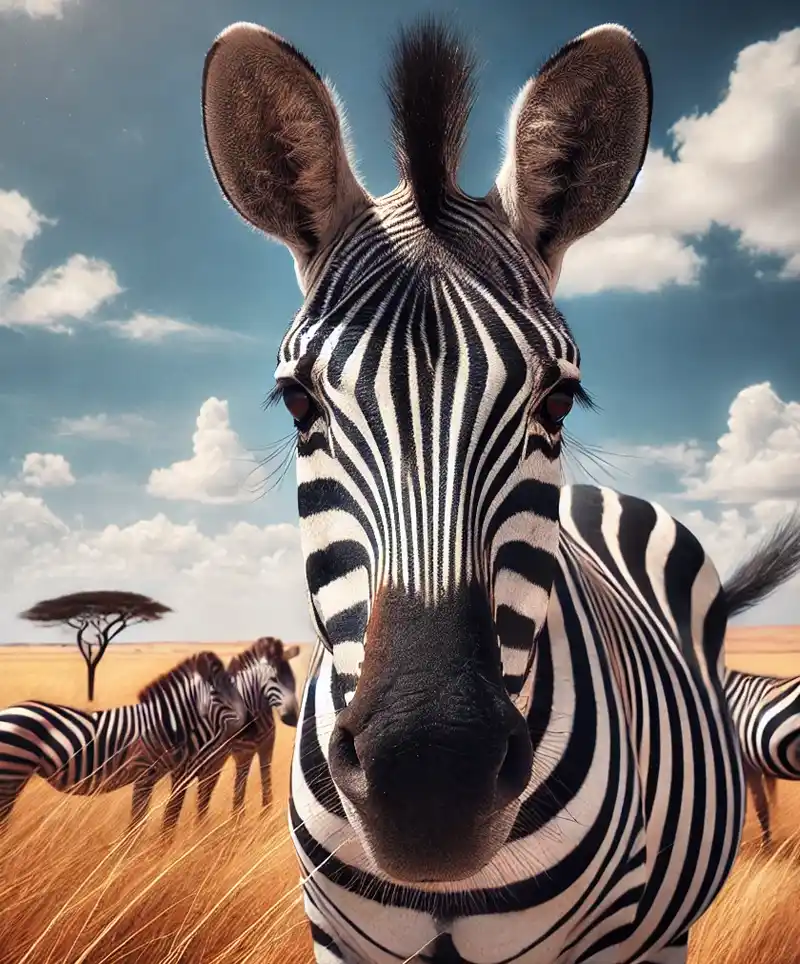Celebrating Nature’s Striped Marvels
Every January 31st, the world pays extra attention to one of nature’s most stylishly dressed creatures—the zebra! With their eye-catching black-and-white coats and quirky personalities, zebras are more than just horse-like animals with a flair for fashion. International Zebra Day is a time to raise awareness about these fascinating creatures and the conservation efforts needed to protect them. So, let’s gallop into some fun facts, myths, and why zebras deserve our admiration (and maybe a little envy for their naturally impeccable stripes).
Origin of International Zebra Day
International Zebra Day was established to bring global attention to the beauty, uniqueness, and conservation needs of zebras. This annual event is believed to have been initiated by conservation groups and wildlife organizations aiming to educate the public about the challenges zebras face in the wild. The day serves as a platform to promote awareness, support conservation efforts, and encourage action to protect zebra populations from threats like habitat loss and poaching. By celebrating International Zebra Day, wildlife enthusiasts and conservationists worldwide come together to advocate for the survival of these strikingly patterned animals.
The Science Behind the Stripes
What’s black and white and debated all over? A zebra’s stripes, of course! Scientists have spent years trying to understand why zebras wear nature’s version of barcodes. Here are some top theories:
- Bug Repellent: Those stripes aren’t just for show—they may help deter pesky insects like tsetse flies and horseflies, which find it harder to land on striped surfaces. A built-in insect shield? Impressive!
- Temperature Control: Some experts believe that zebras stay cooler thanks to their contrasting colors. The differing heat absorption rates between black and white hairs might create tiny air currents—basically, a natural air-conditioning system.
- Predator Confusion: When zebras move in a herd, their stripes create an optical illusion, making it harder for predators like lions to pick out a single target. This trickery is the original magic act of the animal kingdom!
The Social Lives of Zebras
Zebras aren’t just fashionable; they’re also quite the social butterflies. Living in groups known as harems or herds, they form close bonds and even communicate through facial expressions and ear positioning. Think of them as the original emoji users—ears forward? They’re happy! Ears pinned back? Someone’s in a bad mood!
These striped equines also have a built-in security system: when one zebra spots a predator, it lets out a loud call to warn the others. Teamwork at its finest!
Zebras also engage in mutual grooming, which strengthens social bonds within the herd. By nibbling on each other's coats, they remove parasites and reinforce their relationships. This social grooming isn’t just about hygiene—it’s also a way of showing affection and building trust.
 Another fascinating aspect of zebra society is their strong sense of family. Foals recognize their mothers within hours of birth, memorizing their unique stripe patterns to stay close. Mothers are highly protective, and the entire herd often helps in raising young zebras. This collective approach to rearing ensures the next generation thrives in the wild.
Another fascinating aspect of zebra society is their strong sense of family. Foals recognize their mothers within hours of birth, memorizing their unique stripe patterns to stay close. Mothers are highly protective, and the entire herd often helps in raising young zebras. This collective approach to rearing ensures the next generation thrives in the wild.
Despite their close-knit nature, zebras also exhibit a competitive streak, especially among males. Stallions often engage in dramatic battles, rearing up and biting each other to establish dominance and secure mating rights. While these encounters can look intense, they are crucial in maintaining order within the herd.
Species Spotlight
Zebras may all share a signature striped look, but not all stripes are created equal! There are three distinct species of zebra, each with its own habitat, physical traits, and quirks. From the widely distributed plains zebra to the rugged mountain zebra and the rare and regal Grevy’s zebra, these species showcase the adaptability and diversity of these remarkable animals.
- Plains Zebra: The most common species, often seen in large herds across Africa. They have wider stripes and love a good migration.
- Mountain Zebra: Found in rocky terrain, these zebras are excellent climbers and prefer a more rugged lifestyle.
- Grevy’s Zebra: The largest and rarest of the three, with thinner stripes and an attitude that says, “I am an endangered icon.”
Conservation Concerns
While zebras are resilient, they face serious threats from habitat loss, hunting, and competition for resources. Grevy’s zebras, in particular, are classified as endangered, with fewer than 3,000 left in the wild. Conservation organizations work hard to protect these animals, but more awareness and support are needed to ensure zebras continue to dazzle the savannah.
Poaching remains a significant threat, as zebras are often hunted for their skins and meat. Additionally, as human populations expand, zebras face habitat fragmentation, which reduces their grazing areas and forces them into competition with livestock for food and water. Climate change also plays a role, impacting the availability of water and grasslands essential for their survival.
Efforts to protect zebras include the establishment of protected reserves, anti-poaching initiatives, and community education programs to promote sustainable coexistence between humans and wildlife. Supporting these conservation measures is crucial to ensuring that future generations can continue to witness the beauty of zebras in the wild.
How to Celebrate International Zebra Day
Zebras may not throw parties, but that doesn’t mean we can’t! International Zebra Day is the perfect opportunity to celebrate these magnificent animals while raising awareness about their conservation needs. Whether you’re learning more about their unique behaviors, contributing to conservation efforts, or just having some striped fun, there are plenty of ways to get involved.
- Support Conservation Efforts: Donate to wildlife organizations working to protect zebras and their habitats.
- Wear Stripes: Embrace the zebra aesthetic with a black-and-white outfit to show your solidarity. Bonus points if you confuse your cat or dog in the process!
- Spread Awareness: Share zebra facts, artwork, or photos on social media. The more people know, the better chance we have of protecting these amazing creatures.
- Visit a Wildlife Sanctuary: If possible, visit a responsible zoo or wildlife reserve to learn more about zebras firsthand.
So, on this International Zebra Day, let’s take a moment to appreciate these striped wonders. They remind us that nature is full of beauty, mystery, and a little bit of mischief. And honestly, wouldn’t life be more fun if we all had stripes?
Please Share our Content






 Another fascinating aspect of zebra society is their strong sense of family. Foals recognize their mothers within hours of birth, memorizing their unique stripe patterns to stay close. Mothers are highly protective, and the entire herd often helps in raising young zebras. This collective approach to rearing ensures the next generation thrives in the wild.
Another fascinating aspect of zebra society is their strong sense of family. Foals recognize their mothers within hours of birth, memorizing their unique stripe patterns to stay close. Mothers are highly protective, and the entire herd often helps in raising young zebras. This collective approach to rearing ensures the next generation thrives in the wild.








 "Sláinte!" is a traditional Irish expression used as a toast, equivalent to "Cheers!" in English.
"Sláinte!" is a traditional Irish expression used as a toast, equivalent to "Cheers!" in English.